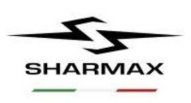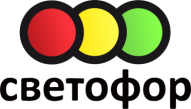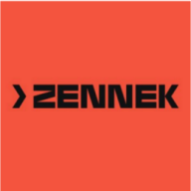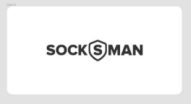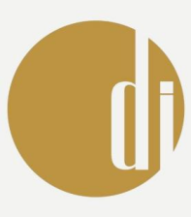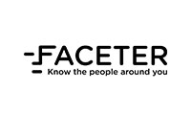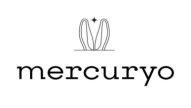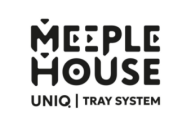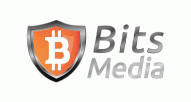A Securities Law Framework for Blockchain Tokens

A Securities Law Framework for Blockchain Tokens
A blockchain token is a digital token created on a blockchain as part of a decentralized software protocol.
There are many different types of blockchain tokens, each with varying characteristics and uses.
Some blockchain tokens, like Bitcoin, function as a digital currency. Others can represent a right to tangible assets like gold or real estate.
Blockchain tokens can also be used in new protocols and networks to create distributed applications. These tokens are sometimes also referred to as App Coins or Protocol Tokens.
These types of tokens represent the next phase of innovation in blockchain technology, and the potential for new types of business models that are decentralized - for example, cloud computing without Amazon, social networks without Facebook, or online marketplaces without eBay.
However, there are a number of difficult legal questions surrounding blockchain tokens. For example, some tokens, depending on their features, may be subject to US federal or state securities laws. This would mean, among other things, that it is illegal to offer them for sale to US residents except by registration or exemption. Similar rules apply in many other countries.
The Framework focuses on US federal securities law because these laws pose the biggest risk for crowdsales of blockchain tokens. In many jurisdictions, there may also be issues under anti-money laundering laws and general consumer protection laws, as well as specific laws depending on what the token actually does.
Part 1: How to determine if a token is a security
The Howey Test
The US Supreme Court case of SEC v Howey established the test for whether an arrangement involves an investment contract. An investment contract is a type of security.
In the context of blockchain tokens, the Howey test can be expressed as three independent elements (the third element encompasses both the third and fourth prongs of the traditional Howey test). All three elements must be met in order for a token to be a security.
1. An investment of money
2. in a common enterprise
3. with an expectation of profits predominantly from the efforts of others
Part 2: Best practices in token sales
The following principles help inform and protect buyers, and increase the chances of a successful token sale, especially for a sale which occurs before there is a live network using the token. They are guidelines and are not designed for any specific situation. Please consult your legal and other advisors.
Most of these best practices do not directly affect whether a token is a security under the Howey Test
Principle 1: Publish a detailed white paper
How?
● Describe the protocol and the network
● Identify a clear and compelling reason for the token to exist
● Provide a detailed technical description of the proposed implementation
● Set clear expectations for total token supply and distribution
● Have an independent expert review the white paper
Why?
A white paper defines the network and its use cases. It is critical for buyers to be able to understand the characteristics and functionality of the token they are buying, the
challenges and risks of development, and the benefits of using the network.
Principle 2: For a presale, commit to a development roadmap
How?
● Provide a detailed development roadmap
● Include estimates of time and costs for each stage of the project
● Include a breakdown of estimated expenses by category
● Allocate funding for each stage of development and consider restricting access to
funding until milestones are achieved
● List the names of key members of the development team and advisors
● Be transparent about remuneration paid to key members of the development
team and advisors
● Quantify early contributions of members of the development team and advisors
● Between sale and launch of the network, report back to token holders periodically
on progress against the development roadmap
● Set aside funds for independent security audits and a bug bounty program
Why?
A clear development roadmap gives buyers confidence that the proceeds of the sale will be properly used for the project and that the network will be launched, meaning that they will be able to use the tokens as intended.
Setting aside funding for each stage of the project helps establish structure and allows
buyers to assess the likelihood of success. Using blockchain features to restrict the
development team’s access to funding can deliver more transparency.
Members of the development team and advisors should be paid full and fair value for
their services, through a combination of money and tokens. Quantifying the value of
contributions, especially early contributions (pre-crowdsale) provides transparency.
Identifying the development team and advisors helps potential buyers assess the
credibility of the project and its potential for success. It reduces the likelihood of fraud.
Note: Many aspects of Principle 2 only apply to token sales which occur before there is a live network using the token
Principle 3: Use an open, public blockchain and publish all code
How?
● Use an open and transparent blockchain
● Use open source software
● Where possible, commit to using standard or well-known token contracts (e.g.
ERC20)
● Do not use a private or unintelligible blockchain, or one for which the developer is
the sole or primary transaction validator
● Commit to undertake an independent security audit before launch
Why?
Building with open source software and using an open, public blockchain provides transparency, enables real participation from token holders and independent developers, allows for auditing, and helps prevents fraud.
Enabling real and meaningful participation in the network from a diverse set of independent parties may also strengthen the arguments against the second and third criteria of the Howey test, because participants are less reliant on the initial developers.
Principle 4: Use clear, logical and fair pricing in the token sale
How?
● Set a maximum number of tokens to be sold in the crowdsale
● Use a pricing mechanism which does not increase over time. Consider a Dutch
Auction or similar mechanism to price tokens fairly
● Set a cap for the amount to be raised
● Set a minimum amount and refund buyers if the minimum amount is not met
● Denominate the price in one currency (e.g. ETH or BTC)
Why?
The total proceeds from a crowdsale should not exceed the estimated costs of
development. A crowdsale should be capped at the number and price of tokens required
to raise this amount.
Pricing mechanisms which increase over time can encourage irrational behavior (e.g.
FOMO) and do not treat buyers equally. Setting the price in a single currency reduces
the potential for confusion and arbitrage.
Principle 5: Determine the percentage of tokens set aside for the development team
How?
Decide on the percentage of the total token supply that represents a fair reward for the
work of the development team and advisors.
Release those tokens to the development team incrementally over time (contingent on
their continued work on the project).
Why?
Concentrating too many tokens in the hands of the development team and other
contributors increases the risk of centralization of control of the network. On the other
hand, setting aside too few tokens does not align the interests of the development team with the interests of other token holders.
Releasing tokens to the development team over time aligns their interests with other
users over a longer period.
Releasing tokens to the development team over time also reduces the risk of affecting
the market - it prevents large numbers of tokens from flooding the market at one time.
Principle 6: Avoid marketing the token as an investment
How?
● Do not promote the token as an investment that will increase in value
● Promote the token based on its functionality and the use case for the network
● Avoid analogies with existing investment language and processes - e.g. ‘ICO’
● Provide appropriate disclaimers about the token as a product, not as an
investment.
Why?
Marketing a token as a speculative investment, or drawing comparisons to existing
investment processes, may mislead or confuse potential buyers. It may also increase the
likelihood that the token is a security.
Using a short, relevant disclaimer which accurately describes the risks of the tokens,
protocols and network is useful. Long, legalistic disclaimers about the risks of investment
are not helpful to buyers and may provide the impression that the token is an investment.
Securities Law Analysis of Blockchain Tokens
According to broad definition of “security” contained in Section 2(a)(1) of the Securities Act:
“any note, stock, treasury stock, security future, security-based swap, bond, debenture, evidence of indebtedness, certificate of interest or participation in any profit-sharing
agreement ... investment contract... or, in general, any interest or instrument commonly known as a ‘security’, or any certificate of interest or participation in, temporary or interim certificate for, receipt for, guarantee of, or warrant or right to subscribe to or purchase, any of the foregoing”.
Based on that definition, appropriately designed Blockchain Tokens would not be deemed to meet the definition of security and, accordingly, that the federal securities laws would not apply to the initial distribution and subsequent trading of such Blockchain Tokens.
I. Nomenclature
A. Blockchain Tokens can have different features depending on how they are designed, but at a basic level each Blockchain Token is associated with one or more computer systems.
II. A Preliminary List of Rights and Investment Interests
Non-security Blockchain Token:
1. Rights to program, develop or create features for the system or to “mine” things that are embedded in the system;
2. Rights to access or license the system;
3. Rights to charge a toll for such access or license;
4. Rights to contribute labor or effort to the system;
5. Rights to use the system and its outputs;
6. Rights to sell the products of the system; and
7. Rights to vote on additions to or deletions from the system in terms of features and functionality.
C. With one or more of the following investment interests likely should constitute a Security Blockchain Token:
1. Ownership interest in a legal entity, including a general partnership;
2. Equity interest;
3. Share of profits and/or losses, or assets and/or liabilities;
4. Status as a creditor or lender;
5. Claim in bankruptcy as equity interest holder or creditor;
6. Holder of a repayment obligation from the system or the legal entity issuer of the Blockchain Token; and
7. A feature allowing the holder to convert a non-security Blockchain Token into a Blockchain Token or instrument with one or more investment interests, or granting the holder an option to purchase one or more investment interests.
D. Non-security Blockchain Tokens can be issued in different classes where each class has different bundles of rights, so long as the class does not include investment
interests.
E. The combination of investment interests with rights into the same Blockchain Token likely would result in a Blockchain Token security.
F. An ownership interest in a fund or other legal entity vehicle that buys non-security Blockchain Tokens would still constitute ownership of a security, even if the fund would not be deemed to own any securities.
G. Non-security Blockchain Token does not become a security merely because the system as to which it has rights has not yet been created or completed.
Based on the above, an appropriately designed Blockchain Token that consists of rights and does not include any investment interests should not be deemed to be a security, subject to the specific facts, circumstances and characteristics of the Blockchain Token itself. Rather, given our analysis in the above, it should be characterized as a simple contract, akin to a franchise or license agreement.
For more information, please contact the lawyers of Law&Trust International.






















